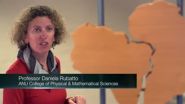(Press-News.org) Ann Arbor, MI, October 16, 2014 – Although disease outbreaks and epidemics drawing worldwide attention emphasize the importance and acute need for public health professionals, the world faces a longer-term challenge—a public health workforce that is truly effective in the 21st century. In a new supplement to the American Journal of Preventive Medicine, experts address critical challenges to public health, from workforce development, capacity building, partnership and collaborations, and changes and needs in workforce composition.
As the U.S. healthcare system evolves and communities gain more access to care, diverse forces are driving change, and the practice of public health is adapting. Given the challenges to the public health system and those faced as a nation—including urgent health threats (e.g., antibiotic resistance, prescription drug use and overdose, global health security) and decreased funding for addressing public health concerns—having trust in public health practitioners, their scientific knowledge, and particularly the public health system, has never been more important.
"The public health workforce is now not only required to take a lead in protecting citizens' health, but it also must provide the evidence base needed for linking public health information with clinical services and activities; offer targeted, scalable public health interventions; and support clinical services in a way that affects populations at large," notes Guest Editor Fátima Coronado, MD, MPH, Deputy Associate Director for Science, Division of Scientific Education and Professional Development, Center for Surveillance, Epidemiology, and Laboratory Services, Centers for Disease Control and Prevention, Atlanta, GA. "This supplement is both timely and important because it reviews some of the critical challenges faced by the public health workforce, discusses selected changes under way, and highlights data-driven research to advance the field of public health services and systems research."
This groundbreaking supplement, The Public Health Workforce, includes 22 articles from more than 30 institutions, agencies, foundations and public companies and covers two major areas: public health workforce capacity building and public health workforce size and composition.
Key topics in the Supplement include:
How to clearly define the public health workforce challenges using cause-and-effect diagrams and a concise roadmap.
Use of Massive Open Online Courses (MOOCs) by the School of Public Health at Harvard and concerns about retention of the knowledge gained using that method of instruction.
How the CDC conducts workforce development within its own organization.
Do students who receive adequate training in Public Health and Community Medicine tend to practice in areas with physician shortages?
How do we count public health workers? In the first study since 2000, 50% of all public health workers are employed at the local level, with 30% and 20% at the state and federal levels, respectively.
How can we define public health workers properly? A taxonomy has been developed which is a necessary step to continuously monitor the size and composition of the workforce to ensure sufficient capacity to deliver essential public health services.
Data show that part-time public health workers are a low percentage of the total workforce and the percentage has decreased over the last 5 years.
Despite relatively uncompetitive pay, local health departments experience lower rates of employee turnover than state health agencies and lower rates than state and local government in general.
How can we align public health workforce competencies with population health improvement goals?
How the Public Health Accreditation Board (PHAB) developed the standards and measures to encourage health departments to strengthen the current public health workforce and strategically develop the workforce of tomorrow.
Do Internal Medicine Residency Programs develop public health competencies?
How a training program for racial and ethnic minorities for careers in public health sciences has resulted in 60% of the students entering public health careers.
Will epidemiology education change rapidly enough to keep up with trends in communications and computing?
How the growth of cities, "Big Data," and cognitive computing will change the public health workforce.
Building a Culture of Health – How the public health workforce will not only provide medical care but will help to establish a Culture of Health.
Nursing as a critical driver of the Culture of Health.
Guest Editors Dr. Coronado and Denise Koo, MD, MPH, Office of Public Health Scientific Services, CDC, Atlanta, GA, and Kristine Gebbie, DrPH, RN, Faculty of Health Sciences, Flinders University, Adelaide, South Australia, write that "we are buoyed by the increased efforts to meet workforce challenges and the valuable contribution of researchers and practitioners to strengthen the public health workforce. Efforts to strengthen the public health workforce should be a continuing priority involving well-planned, evidence based, and coordinated actions from decision makers undaunted by the mission of transforming public health and improving the population's health while facing the complex landscape of the 21st century."
INFORMATION: END
Public health in the 21st century
American Journal of Preventive Medicine supplement addresses critical challenges to public health
2014-10-16
ELSE PRESS RELEASES FROM THIS DATE:
New test can help doctors choose best treatment for ovarian cancer
2014-10-16
Researchers have devised a new test to help doctors diagnose ovarian tumours and choose the most appropriate treatment.
Successful treatment depends in part on accurately identifying the type of tumour, but this can be difficult. As a result, many women with cancer are not sent to the right specialist surgeon, or those with a benign cyst may have a more serious operation than they need.
In a study published today in the British Medical Journal, an international team led by Imperial College London and KU Leuven, Belgium describe a new test, called ADNEX, which can discriminate ...
Slow and steady does not win the weight loss race
2014-10-16
Led by Joseph Proietto, Sir Edward Dunlop Professor of Medicine at the University of Melbourne and Head of the Weight Control Clinic at Austin Health, the study also found that substantial weight loss is more likely to be achieved if undertaken rapidly.
"This randomised study highlights the urgent need for committees that develop clinical guidelines for the management of obesity to change their advice," he said.
The trial included 200 obese adults (BMI 30–45kg/m²) who were randomly assigned to either a 12-week rapid weight loss programme (average weight ...
Cryptic clues drive new theory of bowel cancer development
2014-10-16
Melbourne researchers have challenged conventional thinking on how the bowel lining develops and, in the process, suggested a new mechanism for how bowel cancer starts.
The researchers produced evidence that stem cells are responsible for maintaining and regenerating the 'crypts' that are a feature of the bowel lining, and believe these stem cells are involved in bowel cancer development, a controversial finding as scientists are still divided on the stem cells' existence.
Using 3D imaging technologies, Dr Chin Wee Tan and Professor Tony Burgess from the Walter and ...
Magnetic mirrors enable new technologies by reflecting light in uncanny ways
2014-10-16
WASHINGTON, Oct. 16—As in Alice's journey through the looking-glass to Wonderland, mirrors in the real world can sometimes behave in surprising and unexpected ways, including a new class of mirror that works like no other.
As reported today in The Optical Society's (OSA) new high-impact journal Optica, scientists have demonstrated, for the first time, a new type of mirror that forgoes a familiar shiny metallic surface and instead reflects infrared light by using an unusual magnetic property of a non-metallic metamaterial.
By placing nanoscale antennas at or ...
Scientists find ancient mountains that fed early life
2014-10-16
VIDEO:
Scientists from Australian National University reveal how they found a mountain range that fed an explosion of life 600 million years ago. The range stretched 2,500 km across Gondwana from...
Click here for more information.
Scientists have found evidence for a huge mountain range that sustained an explosion of life on Earth 600 million years ago.
The mountain range was similar in scale to the Himalayas and spanned at least 2,500 kilometres of modern west Africa and northeast ...
Plant communities produce greater yield than monocultures
2014-10-16
Although monocultures can be cultivated efficiently, they are anything but sustainable: environmental damage to soil and water caused by monoculture cultivation is becoming increasingly evident. Despite their disadvantages, however, monocultures remain the principal crop form and are regarded as the sole possibility of achieving higher yields in plant production – quite wrongfully, finds Bernhard Schmid, an ecology professor at the University of Zurich, who advocates a novel form of agriculture and forestry. After all, a new study carried out by PhD student Debra ...
New perspectives for development of an RSV vaccine
2014-10-16
Respiratory Syncytial Virus causes severe respiratory tract infections and worldwide claims the lives of 160,000 children each year. Scientists at VIB and Ghent University have succeeded in developing a promising vaccination strategy to counteract this common virus infection.
Xavier Saelens (VIB/UGent): "We discovered a new vaccination strategy that paves the way for the development of a novel approach to vaccination against RSV, a virus that causes suffering in numerous small children and elderly people."
RSV: an infection that is difficult to combat
The Respiratory ...
Mild traumatic brain injury can have lasting effects for families, reports the American Journal of Nursing
2014-10-16
October 16, 2014 – Families of patients with mild traumatic brain injury (TBI) may expect them to return to normal quickly—after all, it's "just a concussion." But mild TBI can have a lasting impact on families as well as patients, according to a review in the November issue of American Journal of Nursing. The journal is published by Lippincott Williams & Wilkins, a part of Wolters Kluwer Health.
"With the increasing numbers of people with mild TBI in the community, it's crucial for nurses to make this a part of assessment for early recognition and intervention," ...
Energy prices and business decision-making in Canada: Preparing for the energy future
2014-10-16
A new expert panel report, Energy Prices and Business Decision-Making in Canada: Preparing for the Energy Future, released today by the Council of Canadian Academies, details how Canadian businesses have historically been successful in responding to fluctuating energy prices, but this should not be considered a predictor for future resiliency or competiveness. The energy environment is evolving with advances in oil and gas extraction, the development of alternative energy sources, changes within the electricity market, and new regulatory requirements. Understanding the ...
The social web of things
2014-10-16
Research to be published in the International Journal of Web-Based Communities suggests that the familiar interfaces of online social networking sites might be adapted to allow us to interact more efficiently with our networked devices such as cars, domestic appliances and gadgets. The concept would also extend to the idea of those devices connecting with each other as necessary to improve efficiency of heating and lighting, make our home entertainment systems smarter and much more.
Are you Facebook friends with your microwave oven, is your car? Does your washing machine ...
LAST 30 PRESS RELEASES:
Norbert Holtkamp appointed director of Fermi National Accelerator Laboratory
New agentic AI platform accelerates advanced optics design
Biologists discover neurons use physical signals — not electricity — to stabilize communication
Researchers discover that a hormone can access the brain by hitchhiking
University of Oklahoma researcher awarded funding to pursue AI-powered material design
Exploring how the visual system recovers following injury
Support for parents with infants at pediatric check-ups leads to better reading and math skills in elementary school
Kids’ behavioral health is a growing share of family health costs
Day & night: Cancer disrupts the brain’s natural rhythm
COVID-19 vaccination significantly reduces risk to pregnant women and baby
The role of vaccination in maternal and perinatal outcomes associated with COVID-19 in pregnancy
Mayo Clinic smartwatch system helps parents shorten and defuse children's severe tantrums early
Behavioral health spending spikes to 40% of all children’s health expenditures, nearly doubling in a decade
Digital cognitive behavioral treatment for generalized anxiety disorder
Expenditures for pediatric behavioral health care over time and estimated family financial burden
Air conditioning in nursing homes and mortality during extreme heat
The Alps to lose a record number of glaciers in the next decade
What makes a good proton conductor?
New science reporting guide published for journalists in Bulgaria
New international study reveals major survival gaps among children with cancer
New science reporting guide published for journalists in Turkey
Scientists develop a smarter mRNA therapy that knows which cells to target
Neuroanatomy-informed brain–machine hybrid intelligence for robust acoustic target detection
Eight SwRI hydrogen projects funded by ENERGYWERX
The Lundquist Institute and its start-up company Vitalex Biosciences Announces Strategic Advancement of Second-Generation fungal Vaccine VXV-01 through Phase 1 Trials under $40 Million Competitive Con
Fine particles in pollution are associated with early signs of autoimmune disease
Review article | Towards a Global Ground-Based Earth Observatory (GGBEO): Leveraging existing systems and networks
Penn and UMich create world’s smallest programmable, autonomous robots
Cleveland researchers launch first major study to address ‘hidden performance killer’ in athletes
To connect across politics, try saying what you oppose
[Press-News.org] Public health in the 21st centuryAmerican Journal of Preventive Medicine supplement addresses critical challenges to public health


